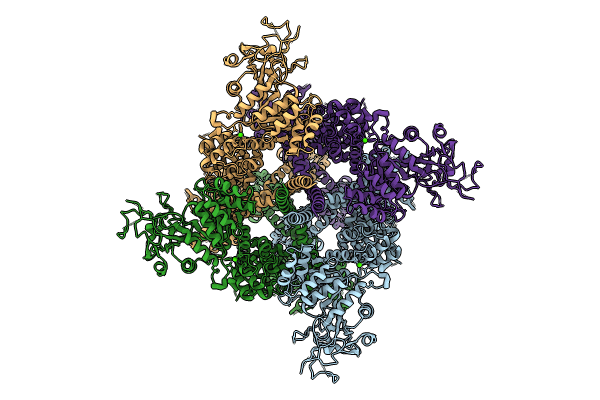
Deposition Date
2024-04-01
Release Date
2024-05-15
Last Version Date
2024-10-16
Entry Detail
PDB ID:
9B8W
Keywords:
Title:
Cryo-EM structure of the human TRPM4 in complex with calcium at 37 degrees Celsius
Biological Source:
Source Organism:
Homo sapiens (Taxon ID: 9606)
Host Organism:
Method Details:
Experimental Method:
Resolution:
3.10 Å
Aggregation State:
PARTICLE
Reconstruction Method:
SINGLE PARTICLE


